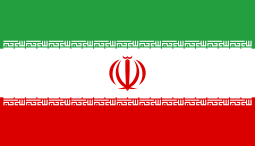
Saffron, or red gold, is one of the most valuable plants in the world, which is cultivated in a very large area in Iran. The preparation and production of this red gold is very difficult and exhausting. For this reason, the price of this valuable plant is very high.
As you know, types of exported saffron are also divided into the following 6 different categories based on quality and price:
Super precious saffron
precious saffron
Sargol saffron
Pushal saffron
Saffron bunch or Dokhtarpich
Saffron cream
Saffron in Iran is known as one of the main poles of export. Saffron exports are ranked based on the type of saffron. For example, full red saffron, which we will introduce later, is exported to European countries in a very large volume.
Of course, we should not forget that Dokhtarpich saffron is another type of saffron that is exported to Arab and European countries.
What is Sargol saffron?
Sargol saffron is the most widely used type of saffron among the general public. Sargol saffron is also divided into three premium, Sarqalam and Sarriseh sections in terms of price and quality. In foreign countries, Sargol saffron is known as full red saffron. The reason for this name is actually the absence of white parts of saffron like cream. Determining the quality of Sargol saffron is a complicated and difficult task. In fact, Sargol can be introduced as the most famous type of saffron among people.
What is precious saffron?
Nagin saffron is one of those products that people know for its wonderful appearance and fragrance. The difference between Negin saffron and Sargol is in the three strands of stigma connected to each other. In Negin saffron, unlike Sargol saffron, the stigma threads are completely smooth and without breaks. The price of Nagin saffron is higher than Sargol saffron, and the main reason is the appearance and stronger aroma of this product.
What is Poshal saffron?
This type of saffron comes from the combination of some cream and stigma. The white part at the end of the string is much less in this type of product. Pushal saffron reduces the possibility of being fake due to the connection of the stigma to the cream and has gained the trust of many buyers and fans of saffron. Grade 1, grade 2, and grade 3 string saffrons are included in Pushal saffron family. The coloring power of Pushal type saffron is much higher than that of the handle or daughter pitch type due to the high amount of stigma. You can accompany us in the relevant article to learn more about Pushal saffron and buy this product.
What is saffron handle or Dokhtarpich?
Full string saffron or Dokht Pitch is known as the mother of saffron due to the fact that no special changes are made on it. To prepare and produce whole saffron strings, farmers separate the saffron strings from the petals and then dry them. The dried threads are tied together with thread to maintain the appearance and beautiful shape of the threads.
In general, the constituent parts of Dokhtarpich saffron can be introduced like this.
The white part of this type of product is called saffron root
It has a yellow part between the white and red parts
The red part is Sargol’s saffron.
How to ensure the originality of saffron?
There are many ways to ensure the authenticity of saffron. In this section, we will introduce some authentic methods of identifying genuine and non-fake saffron.
Never forget this, good saffron always has a sweet aroma and not a sweet taste; Put one string of saffron on your tongue, you should feel the sweet aroma of this plant at first. If your tongue tastes sweet, you should doubt the authenticity of saffron. In fact, the taste of saffron is very little bitter or does not give you any special taste.
Another very effective and accurate method is to use a glass of cold water. Put some strands of saffron in cold water. Due to the use of artificial colors in them, fake saffrons return their color in a very short period of time in a glass of cold water, while the original saffron coloring is very slow and it will take almost 15-20 minutes to cover the entire glass of cold water. You will take on the golden color of saffron.
Original saffron threads are not shiny at all. So, if you come across shiny strands while buying original saffron, doubt the originality of saffron.
Pour some saffron strands on the paper, if fat spots remain on the paper, it shows that the saffron you have chosen is not original.
Pour some baking soda into the water and stir it well until the baking soda dissolves completely in the water. Then add a small amount of saffron to it, if the water turns yellow, your saffron is original, but if the solution changes color to pale red, the saffron you have chosen or purchased is fake.
Take a few strands of saffron on the gas stove, if the color changes to purple or orange when the saffron burns, your saffron is original.
And …



Reviews
There are no reviews yet.